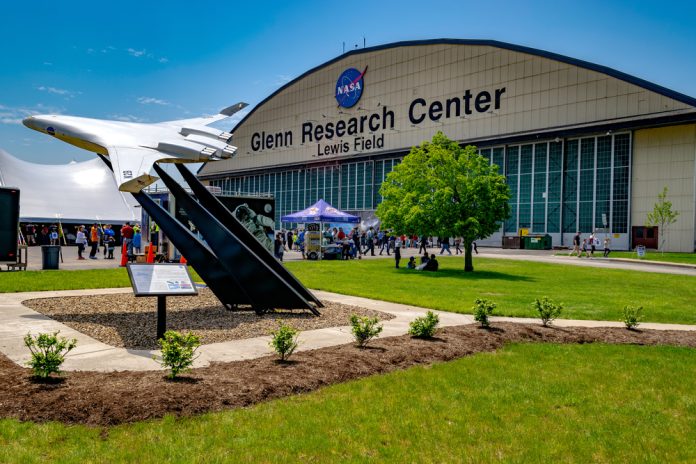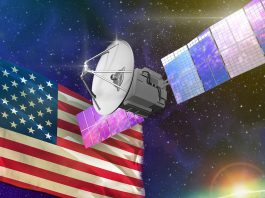The NASA Glenn Research Center provides fascinating insights into its groundbreaking propulsion solution for small spacecraft.
Developed by NASA’s Glenn Research Center, the Small Spacecraft Electric Propulsion (SSEP) Technology Suite, LEW-TOPS-162, enables a compact, high-performance, long-lasting and scalable primary propulsion system for small spacecraft. The SSEP belongs to a class of in-space propulsion known as solar electric propulsion (SEP), where thrust is derived from solar energy and solar panels rather than heavy, combustible stored chemicals.
Combining electric and magnetic fields, the SSEP converts solar energy to thrust by trapping electrons ejected from a cathode in a doughnut-like ring created by an annular magnetic field contained within its thruster. This creates a Hall current, a circulating swirl of electrons, confined in the thruster’s annulus, and enables Hall Effect Thrusters (HETs). Thrust is generated when a neutral gas is released at one end of the annular thruster, which then diffuses into the Hall current, where electrons can collide with it and ionize it. Now charged, this gas is abruptly accelerated out of the other end of the annular thruster due to an electric field, imparting thrust.
The SSEP solves a technology gap for NASA, specifically, the lack of a highly capable SEP system optimized for small spacecraft on the order of 200 to 500 kilograms. This scale of spacecraft makes the SSEP ideal for rideshare. This is the practice of purchasing secondary payload volume on a rocket whose orbital trajectory is mostly paid for by another. By maximizing capacity with rideshares, more hardware is lifted to space, which creates more opportunities for small spacecraft.

Leveraging heritage, the SSEP increases the operating life of sub-kilowatt HETs. Compared to state-of-the-art sub-kilowatt HETs, the SSEP operates five to seven times longer, making it ideal for high maneuver applications in low-Earth orbit (LEO), geostationary orbit (GEO), lunar missions, and beyond. (See Figure 1’s Advanced Sub-kilowatt SEP applications).
Heritage is a term of art. As the name suggests, it is demonstrated technology success passed from one space-flown mission to another. Since the cost of flying spacecraft is so expensive, mission designers value space-tested and proven technology. Heritage helps newer spacecraft avoid costly failures because designers select proven technology. Knowing this, NASA Glenn’s SSEP team engineered with heritage in mind. Unlike other technology solutions, the SSEP’s focus on heritage design practices, materials, processes, and components facilitates market adoption, while also implementing creative and focused design advancements, pushing sub-kilowatt HET capability beyond the state-of-the-art.
To promote market adoption and American in-space competitiveness, Glenn provides these technologies individually, or in aggregate, to U.S. companies through a no-cost, nonexclusive license agreement with a companion Space Act Agreement (SAA). SAAs are legal instruments for NASA to collaborate. Under this framework, licensees receive a comprehensive technical package that NASA Glenn built and curates in a consortia-like environment. This is a service NASA provides with the aim of eventually buying U.S.-made high-quality and high-performance SEP systems.
An advantage of HETs over other high-performance SEPs, such as gridded-ion thrusters, is their higher thrust-to-power ratio. High thrust-to-power ratios make HETs attractive for time-sensitive missions requiring large impulse maneuvers. Since most SEPs flown today utilize HETs, their advancement has immediate space industry implications. Indeed, economic projections suggest that commercial space revenue in 2040 could exceed $1 trillion U.S. dollars; as of 2020, it was $350 billion. Driving this growth is the reduced cost to access space and increased demand for satellite-based services.
Impacting this growing market, the SSEP can revolutionize small spacecraft capabilities while minimizing launch costs. Epitomized by the “Tyranny of the Rocket Equation,” lifting more payload on a rocket means packing that rocket with more propellant mass. More mass means more propellant; more propellant begets more mass, leading to more propellant. And the tyranny repeats. The SSEP breaks this cycle.
Today, with regular flights to LEO, the space industry resembles the aviation industry. Increased launch cadence means increased rideshare. To maximize rideshares, more small spacecraft equipped with SSEP can tag along as secondary payload and depart after orbital insertion.
- Low-Earth Orbit (LEO): The SSEP does not compete against ultra-low-cost HETs targeting the LEO market. Although the SSEP system is designed for cost, its requirements to achieve high-performance outstrip costs acceptable for LEO mega-constellation missions, such as SpaceX’s StarlinkTM. However, there are at least two potential LEO applications for the SSEP. The first is long-term orbital maintenance in very low orbits requiring continuous atmospheric drag compensation. The second is significant or repeated inclination changes, or a change to a satellite’s orbital tilt, as may be needed for operationally responsive reconnaissance. Inclination changes are costly maneuvers on propellant for conventional LEO satellites. When a satellite depletes its propellant, it reaches end-of-life. The SSEP can extend the life of such satellites through efficient propellant utilization and other design features.
- Higher Earth Orbits: Whether reaching higher orbits by departing LEO or ridesharing on a rocket with a trajectory to a higher orbit, the SSEP has applications in orbit raising (an orbital maneuver that increases altitude), space debris cleanup, collision avoidance, station keeping (maintaining a fixed distance relative to something else), and spacecraft servicing. For instance, station keeping in geostationary equatorial orbit (GEO) can last decades. Recently, Northrop Grumman’s Mission Extension Vehicle (MEV) serviced end-of-life satellites. While propellant depletion is normally considered end-of-life for GEO satellites, their other hardware may retain excellent functionality and commercial value. Rather than parking an otherwise valuable satellite in a graveyard or disposal orbit, MEV-like vehicles equipped with SSEP dock with these satellites and augment their propulsion system, like a tugboat, greatly extending their service life. Pushing this tugboat paradigm further, robotically deploying a smaller Mission Extension Pod (MEP) onto an end-of-life satellites can function like an MEV; these are deployed from a larger Mission Robotic Vehicle (MRV). Not only can an MRV travel to other satellites and deploy more MEPs from a refillable stock for more satellite servicing, but it also provides inspection and repair. MEP’s equipped with SSEPs will expand commercial space and derive more value from existing and future space infrastructure.
- Beyond Earth Orbits: Beyond Earth, researchers can also benefit from the SSEP ridesharing. Science missions can depart from orbit using their SSEP to the Moon, Mars, Lagrange points, or the main asteroid belt.
An emerging application is the LunaNet concept. For NASA to build a sustainable presence on the Moon, it needs high-bandwidth, uninterrupted lunar satellite communication infrastructure. The vision of LunaNet is to link landers, lunar devices, and astronauts with outposts on the Moon and the planned Gateway space station. For this, NASA needs highly capable Moon-orbiting communication satellites to act as relays between all these nodes and the dark side of the Moon. One way to economically get them there is using the SSEP. Rather than launching dozens of communication relays from dozens of rockets, one LEO rocket could launch them all. Then, LunaNet satellites could maneuver independently to lunar orbits under their own power, representing substantial cost savings.
Further, the SSEP provides the opportunity for low-cost small spacecraft missions to slowdown once in space. Typical low-cost missions achieve cost by doing flybys, rather than stopping. By not stopping, spacecraft forego significant propellant mass depletion for deceleration maneuvers, greatly reducing spacecraft mass and mission cost. Without deceleration, a target that took months or years to reach only has hours—sometimes even minutes—to view it, limiting the potential science return. Improving the ability of small spacecraft to maneuver and orbit their targets offers an opportunity to maximize scientific value.









